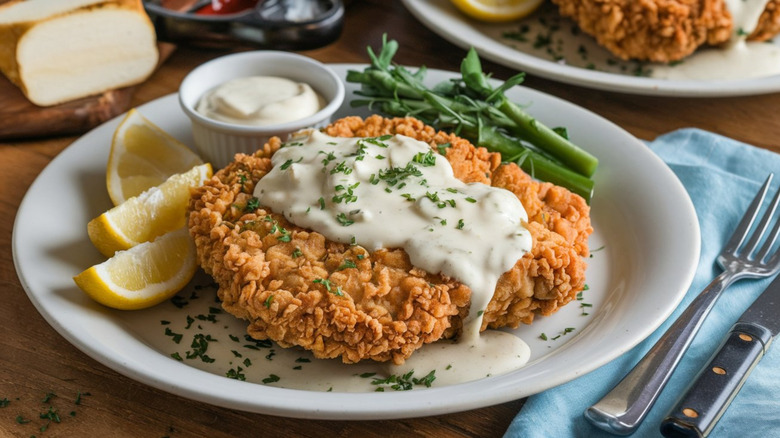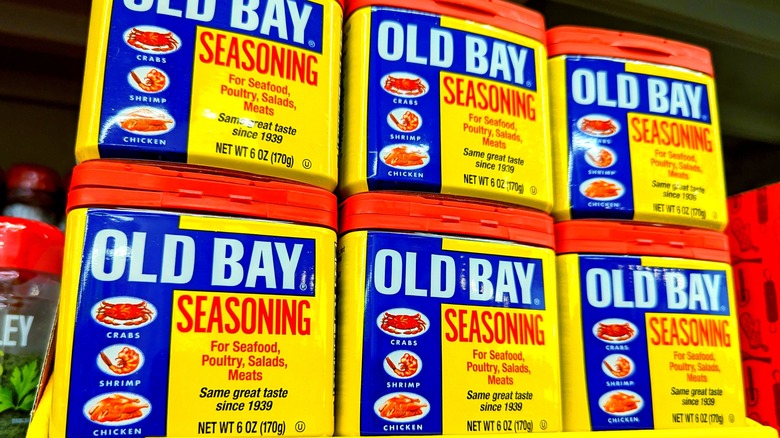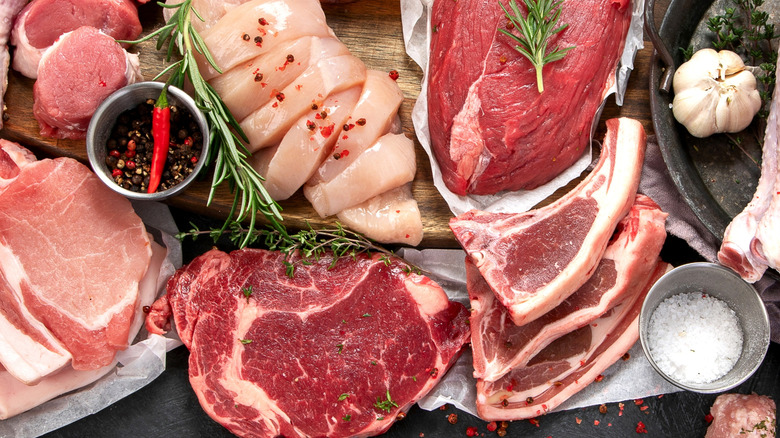The Classic Seafood Seasoning That Takes Chicken-Fried Steak To The Next Level
Chicken-fried steak is one of those gems that's in a realm of its own when it comes to comfort food. I remember the good ole' days, going to my hometown Country Buffet, and my dad would order the chicken-fried steak. I had no idea whether it was chicken or steak as a kid, but it sure was delicious nonetheless. Even if the name can be a bit confusing, what's not to love? I mean, it's well-seasoned and shallow-fried beefsteak (usually cube steak), smothered in a wonderful peppery white gravy.
At all points of this dish, there's something just as glorious as the last. But if you're looking for a way to bring a little more flavor to the table without overcomplicating things, it might be time to reach into your spice cabinet and grab the Old Bay. Yes, the same bright yellow tin you've probably reserved for shrimp boils, jambalaya, and crab cakes has something to offer your Southern-style skillet, too.
Old Bay brings a versatile blend of celery salt, paprika, black pepper, and a few warm spices that accentuate the richness of fried meat like a charm. It's bold enough to stand out without overwhelming everything else on the plate, and it adds just enough complexity to make people stop mid-bite and ask what your secret is.
How to use Old Bay in your breading and seasoning mix
The best way to weave Old Bay into your chicken-fried steak recipe is by adding it directly to the flour mix you're going to use for breading. I've seen someone try to add it to the meat itself, and I don't think it turned out quite as well, so to each their own, but I'd suggest the flour mixture as the best option. Before dredging your steaks, mix a generous teaspoon of Old Bay into your all-purpose flour, along with salt, pepper, and maybe a pinch of garlic powder or onion powder for backup. The key here is balance because Old Bay is potent, so even a little bit can go a long way. You want it to enhance the flavor, but not completely dominate it and turn it into a salt fest.
You can also stir some Old Bay into your buttermilk or egg wash for a layered flavor throughout the breading process. That way, you're seasoning every step of the coating, and not just the outer layer. If you've fried anything, then you know how challenging it can be to get flavor to withstand the frying process. Once fried, the seasoning melds into the crust, creating a crispy, golden shell with a pop of spice that lingers in the best way.
If you're someone who likes to dip or pour homemade gravy over your chicken-fried steak, Old Bay still plays nicely with the creamy element. It has enough warmth to cut through bold flavors without clashing with traditional white gravy. You can even stir a dash into the gravy itself if you're feeling adventurous, as it gives it a little extra edge without changing the texture or consistency.
Why Old Bay works so well outside of seafood
It might seem odd to reach for a seafood seasoning when you're cooking beef, but Old Bay isn't just for clams and crawfish. The blend was designed to complement all kinds of savory, salty foods, and chicken-fried steak checks both of those boxes. The combination of paprika, mustard, and celery salt gives it a slightly smoky, peppery depth that pairs well with all kinds of meats and fried textures. It kind of serves as a seasoning salt like Lawry's, but with a little more "oomph" in there.
Some people say they put it on everything from pizza to popcorn to fried chicken, roasted potatoes, scrambled eggs, and more. All of these foods can definitely be enhanced with a bit of spice, and Old Bay just happens to hit the right mix of spicy, savory, and aromatic. Its flavor doesn't lean too heavily in any one direction, which is why it adapts so well across different dishes, including non-seafood ones like fried steaks or even baked casseroles.


